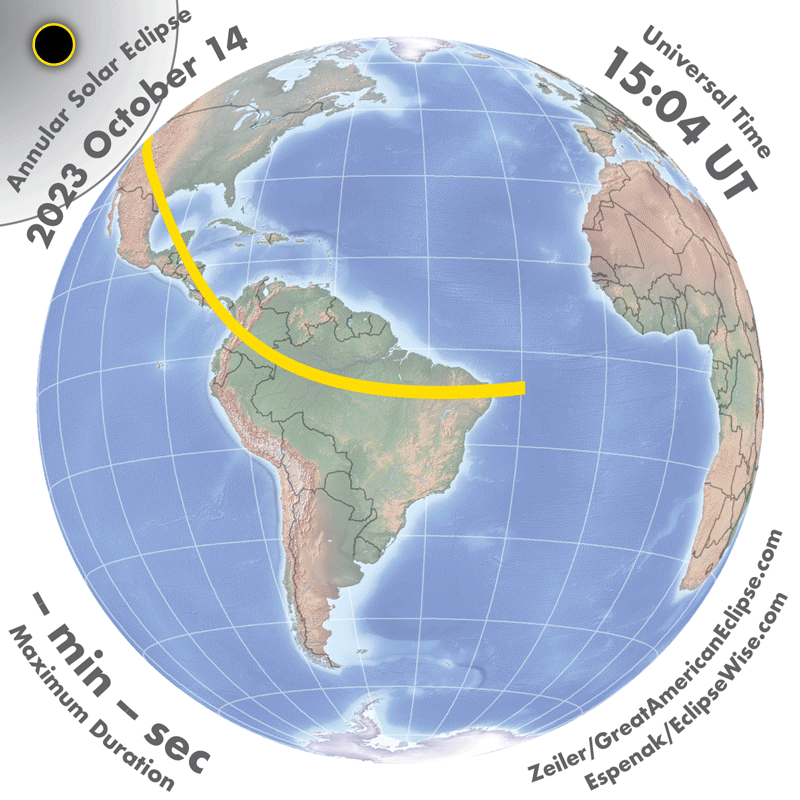
Though we all have differences, there’s one commonality that has prevailed for all of humanity: we are all floating on a rock, flying through outer space at over a million miles an hour.
Thanks to the rapid advancement of technology in the past century, we can observe much more of the universe than we ever thought possible.
The scale and sheer size of the universe make it impossible to truly learn everything, but it doesn’t mean we shouldn’t try.
Here's what's happening in space this week.
'RING OF FIRE' ANNULAR SOLAR ECLIPSE
An annular solar eclipse will make its way across the skies of North, Central, and South America on October 14th - and we won't see another one like it until 2046.
According to NASA, an annular solar eclipse occurs when the Moon passes between the Sun and the Earth at its farthest point away from Earth. Because of the Moon's distance from Earth, it appears to be smaller than the Sun and does not fully cover it. This causes a crescent-shaped partial solar eclipse.
The eclipse will be visible in all 49 continental U.S. states, however, what you see during the eclipse will depend on the location you're viewing from.
Annular solar eclipses are often referred to as 'ring of fire' eclipses. Since the Moon is blocking the Sun while it's simultaneously farther from the Earth than usual, it doesn't fully cover the Sun. This causes an orange ring of sunlight to surround the Moon, creating the appearance of a 'ring of fire.'
Those in the path of this celestial event can expect to see the eclipse in multiple phases. While the start and end of the eclipse will vary depending on your location, it should begin around 10:15 a.m. CT.
The first phase is a partial solar eclipse, which will occur just as the Moon crosses paths with the Sun. As it slowly covers more and more of the Sun's light, the Sun will form a 'C' shape. According to NASA, this phase is also known as first contact.
The peak of the eclipse, known as annularity or second contact, will happen about an hour and 20 minutes into the event. At this point, the Moon is completely in front of the Sun, creating the 'ring of fire.'
Lasting for up to 5 minutes depending on your vantage point, this is the part of the eclipse that people are most excited for. The sky will darken, and animals and insects may even start to behave as if it's dusk.
While the 'ring of fire' is one of the most stunning aspects of an annular solar eclipse, it can also be dangerous to view if your eyes are unprotected. It is crucial to use appropriate eye protection when observing a solar eclipse to avoid causing permanent damage to your eyesight.
The next phase, third contact, occurs when the Moon continues to pass across the Sun's face, creating another partial eclipse.
Fourth contact, the eclipse's final phase, happens when the Moon no longer overlaps the Sun's disk, marking the end of the eclipse.
Those who aren't able to see the eclipse can view a livestream of the event from NASA, beginning at 10:30 CT on October 14.
LISTEN on the Audacy App
Tell your Smart Speaker to "PLAY 1080 KRLD"
Sign Up to receive our KRLD Insider Newsletter for more news
Follow us on Facebook | Twitter | Instagram | YouTube

